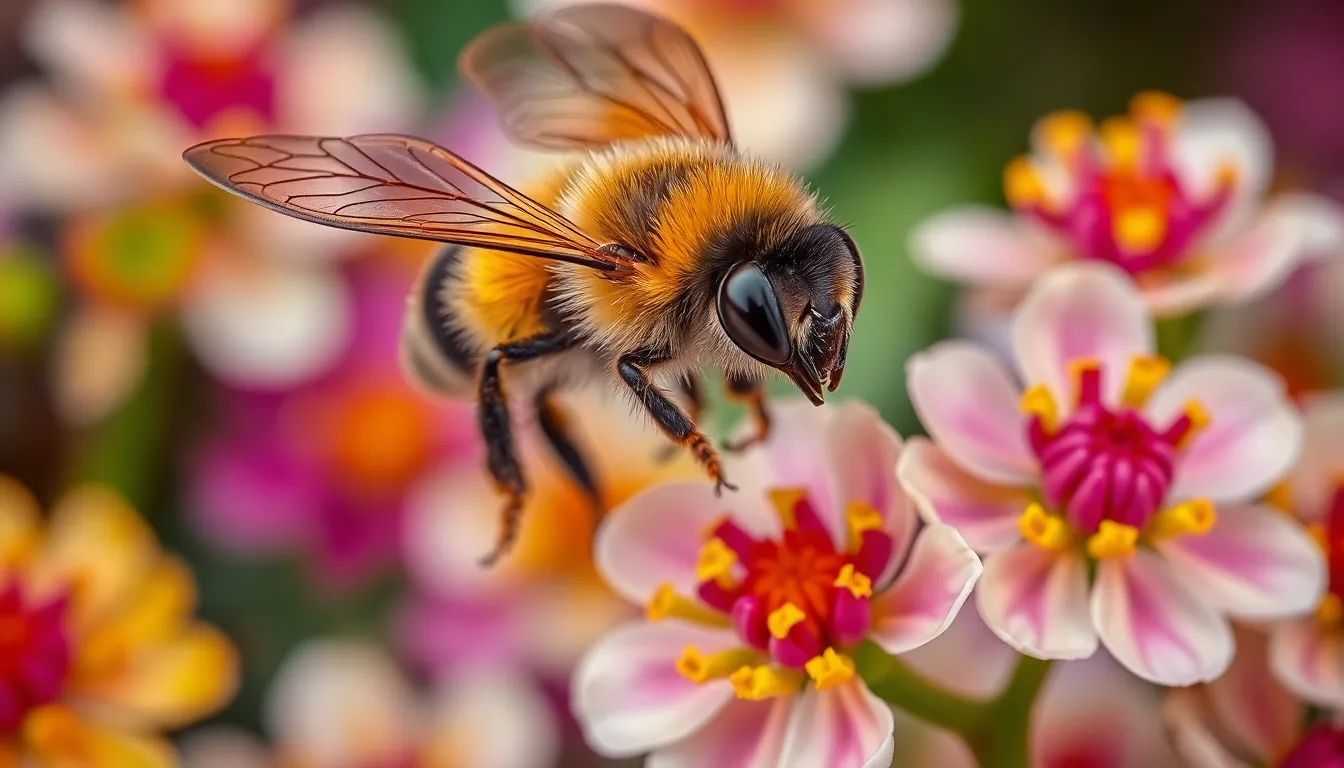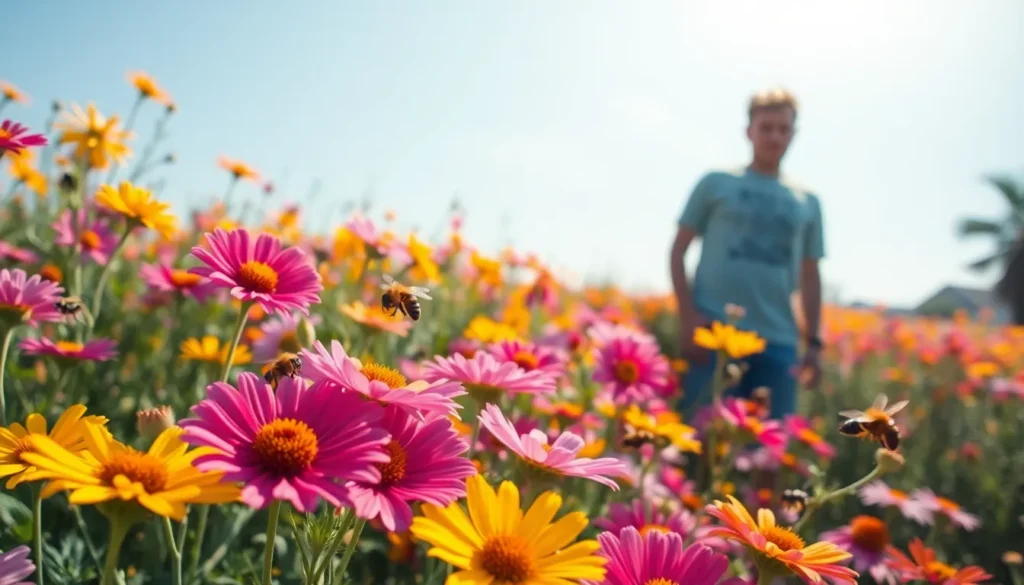Ever wondered how bees see the world? It’s not just a buzz-worthy question; it’s a journey into the fascinating realm of bee vision. While humans rely on a palette of colors, bees have a unique perspective that could make even the most vibrant painter envious. They see ultraviolet light, which means flowers look like they’re wearing neon signs just for them.
But what about us? How do these tiny pollinators perceive the giants that loom over their hives? Spoiler alert: it’s not exactly a flattering view. With compound eyes that can detect movement better than a hawk, bees might think humans are just big, clumsy creatures flailing about. Join the exploration to uncover the surprising ways bees interpret the world and what it means for our relationship with these essential pollinators.
Table of Contents
ToggleUnderstanding Bee Vision
Bees possess a unique vision system that sets them apart from humans. Their eyes allow them to interpret the environment in ways humans cannot.
Anatomy of Bee Eyes
Bee eyes consist of two types: compound eyes and simple eyes. Compound eyes, located on either side of the head, contain thousands of tiny lenses called ommatidia. These lenses provide a broad field of view and enhance motion detection. Simple eyes, or ocelli, sit on the top of the bee’s head and help with light perception. This combination enables bees to navigate efficiently and detect nearby predators. With a compound eye structure, bees can spot fast movements, making them adept at avoiding dangers.
Color Perception in Bees
Color perception in bees differs significantly from that of humans. Humans see colors in the red, green, and blue wavelengths, while bees perceive ultraviolet light, blue, and green. Flowers reflect ultraviolet, making them appear more vibrant to bees. This ability helps bees locate pollen and nectar more effectively. Additionally, the contrast between the ultraviolet patterns on flowers and their background aids in navigation. By detecting these patterns, bees efficiently gather food and contribute to pollination.
How Do Bees See Humans?

Bees perceive humans differently than humans perceive themselves. Their vision is tailored for detecting movement and evaluating distances efficiently.
Distance and Movement Detection
Bees excel at detecting motion. Their compound eyes give them a 360-degree view, allowing them to spot approaching creatures. While humans focus on distance using binocular vision, bees experience objects in a more two-dimensional manner. Rapidly flapping wings signal potential threats, and bees react swiftly to changes in movement. This feature aids in navigation and helps avoid collisions with larger beings, including humans. Figures show that bees can detect motion as small as 0.01 degrees, enhancing their ability to navigate through complex environments.
Patterns and Shapes Recognition
Shapes and patterns play crucial roles in how bees understand their surroundings. They recognize floral patterns, which guide them to nectar sources. Bees respond quickly to the shapes of flowers, associating specific forms with rewards like pollen. Their visual processing enables them to distinguish between various flower types, optimizing forager efficiency. Studies indicate that bees can learn and remember intricate patterns over time, allowing them to communicate the location of resources to others. This ability highlights their reliance on shapes for survival and foraging success.
Implications of Bee Vision on Human Interaction
Bees’ unique vision plays a crucial role in their interactions with humans. Their ability to perceive ultraviolet light influences how they navigate and forage for food, impacting human agricultural practices.
Importance for Pollination
Pollination hinges on bee vision, as their ability to detect ultraviolet patterns on flowers guides them to nectar sources. Flowers that display these patterns often attract more bees, which enhances pollination efficiency. When bees collect nectar, they inadvertently transfer pollen from one flower to another. This process ensures the reproduction of plants and contributes to healthy ecosystems. Farmers aiming to cultivate crops benefit from understanding how bees perceive their fields. Optimizing flower colors and patterns can significantly increase bee visitation rates, ultimately boosting crop yields.
Effects of Environmental Changes
Environmental changes have a direct impact on how bees see and interact with their surroundings. Factors like climate change and habitat loss can alter flower availability and visibility, affecting bee foraging behavior. Diminished flower diversity can limit the visual cues bees rely on for navigation. Moreover, pesticide exposure may impair their vision, complicating their ability to detect movement and locate food sources. Protecting natural habitats and reducing pesticide usage is vital for maintaining bee populations. Sustainability measures help enhance the resilience of bee vision and support their critical role in pollination.
Bees possess a remarkable vision that shapes their interactions with the world around them. Their ability to see ultraviolet light and detect motion sets them apart from humans, allowing them to navigate and forage with incredible efficiency. Understanding how bees perceive their environment not only highlights their unique adaptations but also underscores the importance of protecting these essential pollinators. By recognizing the intricacies of bee vision, individuals can make informed choices that support healthy ecosystems and promote sustainable agricultural practices. The relationship between bees and humans is vital, and appreciating their perspective fosters a deeper respect for these extraordinary creatures.













